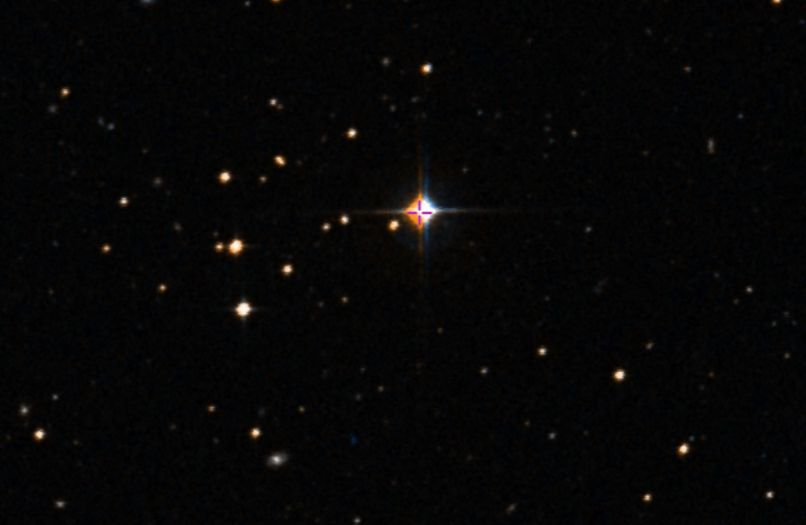New and exotic named LTT 9779 b, the planet found by Chilean scientists is located 260 light-years from Earth and reaches temperatures of up to 1,700°C. It is considered an exoplanet because it is located outside the Solar System, with characteristics that make it a type of celestial body that was not known to exist until now.
A team of astronomers from the University of Chile, led by academic James Jenkins, discovered LTT 9779 b, a planet orbiting very close to a star located in a very unpoilt region of the Universe. A virtually devoid area of planets, known as the Neptunian Desert.
The exoplanet is so close to its star that its year lasts only 19 hours and its temperature rises to 1,700 degrees Celsius, although it manages to maintain its atmosphere, which is considered by scientists a unique and very relevant feature for studies of planetary atmospheres. Finding it also helps to know some of the mysteries related to how these planets form.
“It is difficult to understand how such a planet can exist. Because it really has an atmosphere that is 10% of the total mass of the planet. But it’s super-close to its star, so the star’s radiation must blow its atmosphere quickly, so it’s not easy to explain how it exists,”
says James Jenkins, professor in the Department of Astronomy at the University of Chile and in charge of the team that found the planet.
The new planet owes its name to its star LTT 9779, a sun-like star, located at a distance of 260 light-years from Earth, relatively close in astronomical terms. Star that contains a high amount of metals and has twice as much iron in its atmosphere relative to the Sun.
The new planet is similar in size to Neptune, about 24,600 km, but weighs twice as much, although it has a similar density, experts explain. These characteristics make them think that LTT 9779 b should have a huge nucleus of approximately 28 Earth masses, and with an atmosphere representing, as noted, about 10% of the total planetary mass. But it is his temperature that attracts the most attention, which is caused by the proximity to his star.
“This is a new type of planet, Ultra Hot Neptune. Its atmosphere is going to be super-interesting because it’s different when it reaches this temperature, you can have a shape like, for example, ionized metals or dissociate molecules. It’s not the same as cold planets, like Neptune or something. They are superdifferent when they reach this temperature 1,700 degrees Celsius or higher. So this planet is super unique.”
A coordinated finding
Astronomers began working on this project in late 2018 and the discovery of the particular planet was achieved two years later through two important instruments: the Transiting Exoplanet Survey Satellite (TESS), which alternately observes 26 sectors over the course of two years; and the Radial Velocity Planet Searcher (HARPS) at the European Southern Observatory (ESO), located in Chile.
In 2018, TESS recorded the moment the celestial body passed to the front of its star causing a small eclipse, and harps corroborated the discovery.
“We just had to continue to observe, so much of this is a good example of the connection, not just of the two methods, of the spacecraft like TESS and quickly the use of telescopes on earth, as in Chile to confirm”
Jenkins says, adding that
“With this, we could measure its orbit period, its physical size, its mass, its weight. And with both physical size and mass, you can calculate their density. And when you have the density you can use models of the structure to really understand how the planet is.”
The planet LTT 9779 b belongs to a system that is about half the age of our Sun, about 2.000 million years. The intense radiation of the star, and the proximity of the exoplanet to it, as explained by astronomers, should not allow an atmosphere to remain for so long, opening up a huge field of knowledge.
“We’re going to really learn a lot physically from planets. This one, for astronomers, for astrophysicists is excellent. When you have, not just planets, I’m talking about science in general, but you have an extreme lab (…) you can learn a lot about nature, physics, and in this case about planet formation and its evolution. And also because of the temperature of its atmosphere, which we expect because there are not so many much larger planets”
Jenkins points out.
Contributions to Global scientific knowledge
This discovery is going to have a big impact, according to Jenkins, particularly in the field of exoplanets.
“People fully understand that this is quite unique, that we have to observe it in great detail to understand more, not just as planets of the Neptunian Desert, as planets in general, and physics, the interaction of stars with their planet and everything.”
The latter, in the words of the astronomer, because the LTT9779b is a celestial body that had to move:
“It did not form very close to its star, but it had to move to this position. So we’re going to learn a lot from the formation of planets, how atmospheres form, how atmospheres react against this radiation field.”
Therefore, in the scientific field it is quite important, not only in exoplanets, but in general science:
“this is a great milestone because when we have something new we can not only learn from planets, but from physical things, like from the Universe, but from nature.”
For Jenkins, this finding also shows that his country has all the resources to compete globally with other teams that are looking for planets.
“In astronomy, Chile is one of the leaders. It is super important to us as a team, to show Chile on the world stage, and also for people, because we want to use these discoveries as inspirations to have new generations of scientists, engineers, everything.”
